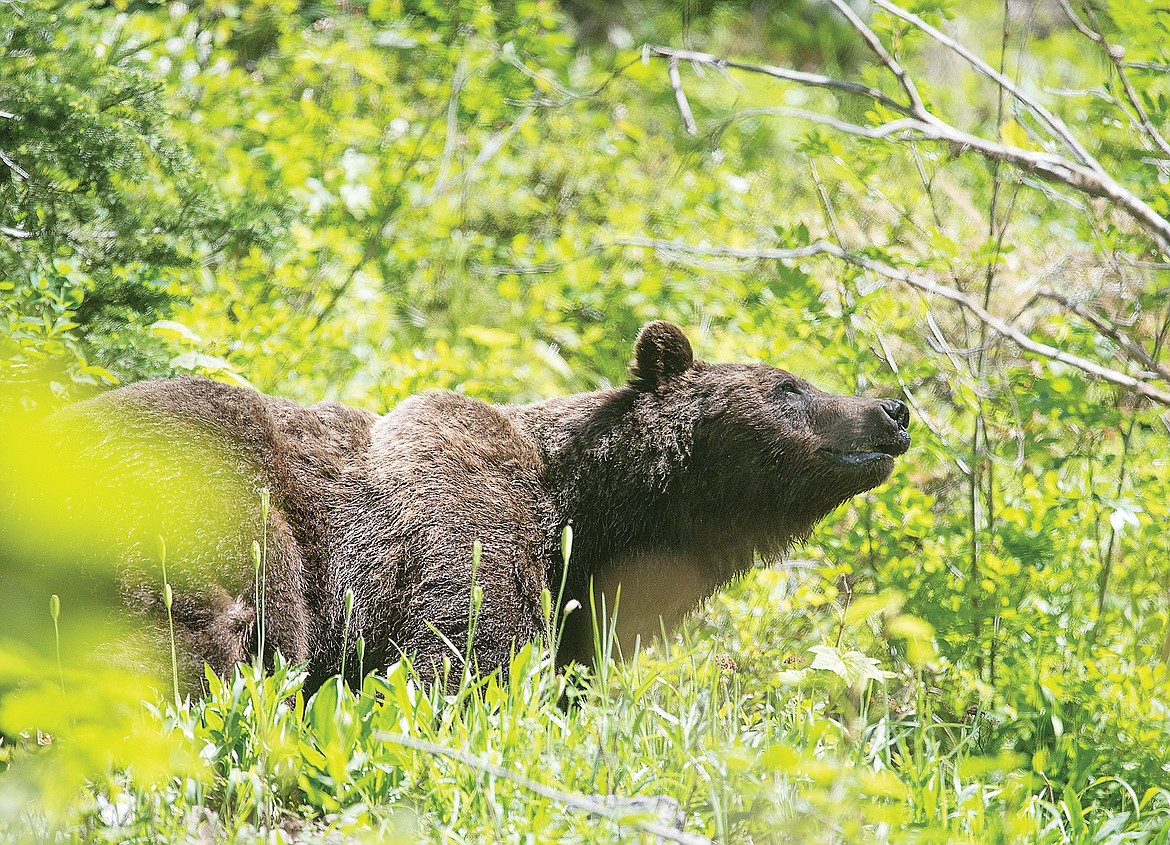Rosendale introduces bill to delist region’s grizzly bears
Montana Congressman Matt Rosendale has introduced legilation that would remove the grizzly bear from the Endangered Species List in the Northern Continental Divide Ecosystem, which includes Glacier National Park and the Bob Marshall Wilderness.
There’s about 1,100 bears across the 8 million acres that make up the NCDE.
But in the past few years, bears have made their way out of the hills and into the plains, following river valleys.
Some ranchers have learned to live with the bears. Others, not so much.
“Montana farmers and ranchers are concerned about the well-being of their families and businesses due to the threat posed by Northern Continental Divide grizzly bears. This legislation will give Montanans the recourse necessary to defend their lives and livelihoods from a grizzly bear population that has surpassed the point of thriving and now pose a direct threat to rural communities,” Rosendale claimed in a release.
HR 1419 had a hearing before the House Committee on Natural Resources last week..
“Grizzly bears are predators,” Rosendale claimed.
The hearing included testimony from Karli Johnson of the Sevens Livestock Company.
“Our dog got swiped by a bear in our yard. The claw marks could be seen on his back. The dog survived. A couple summers ago, a bear walked through our yard, on our lawn, in broad daylight. The only reason our son wasn’t riding his bike right where she walked was because it was windy that evening,” Johnson said. “She was obviously comfortable around humans.”
Grizzly bears have been delisted in the Yellowstone Ecosystem in the past, but the courts ruled that bears in the NCDE and Yellowstone needed to be interconnected genetically, and so they were put back on the ESA.
Rosendale claimed it was liberal judges that were keeping bears on the ESA.
But Chris Servheen, the former U.S. Fish and Wildlife Grizzly Bear Recovery Coordinator and author of the plan that saw bear populations rebound over the past few decades, had a different view.
Servheen once supported delisting of bears, but he noted that the ESA isn’t about mere numbers of animals, it requires that states have adequate regulatory mechanisms in place to assure the delisted populations remain healthy over time.
Servheen said he had little confidence states would do that.
“Most grizzlies and wolves do not kill livestock,” Servheen testified.
In Montana in 2022, Servheen noted that grizzlies and wolves combined killed 218 sheep and cattle.
That amounts to eight one-thousandth of 1% of the total population of cattle and sheep in the state.
Livestock producers were compensated $237,000 for their losses, Servheen noted. That included mountain lion depredations. Lions killed 59 animals.
Servheen said states would look to trim grizzly bear populations just like they have done with wolves, claiming states would try to “Legislatively minimize grizzly bear numbers inside recovery zones and eliminate most grizzly bears outside recovery zones.”
He said the ESA works because it is based on science and facts and he urged lawmakers not to pass legislation to circumvent the ESA and congressionally delist grizzly bears.
The grizzly bear bill is just one of three bills concerning bears and wolves in Congress.
HR 1245 would delist the Yellowstone grizzly bear population and HR 764 would delist gray wolves nationwide.
Wolves are already delisted in Montana — Congress did an end-around of the ESA to delist them back in 2011.
Conservationists don’t believe the bills, even if they pass the House, would pass the Senate as stand alone measures, but they could be amendments to other “must pass” bills.
The delisting of wolves in Montana, Idaho and Wyoming was attached to a budget bill during the Obama Administration.

